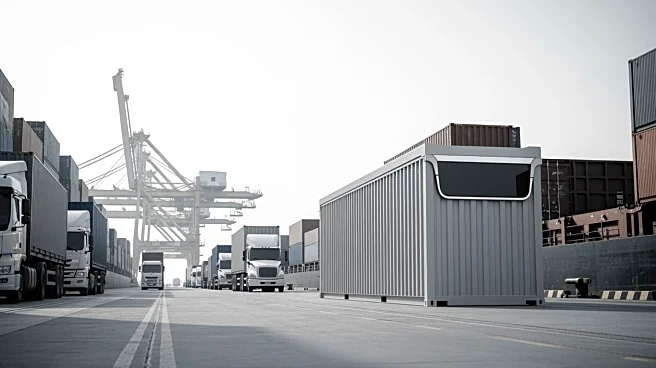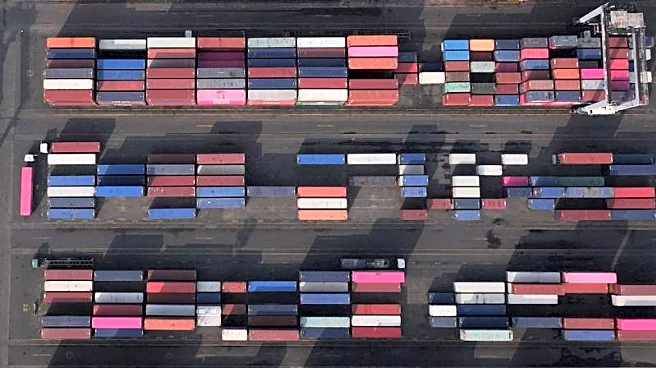What's Happening?
ArcBest, a shipping and logistics company based in Fort Smith, reported a 60.8% decline in third-quarter net income, attributed to a challenging freight environment and lower manufacturing sector output. Despite the revenue dip of 1.4% to $1.048 billion,
the company exceeded earnings expectations with adjusted per share earnings of $1.46, surpassing the consensus estimate of $1.33. ArcBest's Asset-Light segment achieved record shipment volumes and productivity, while its largest subsidiary, ABF Freight, saw improved revenue and operating income compared to the previous year.
Why It's Important?
The earnings report highlights the resilience of ArcBest in navigating a difficult economic landscape marked by a freight recession and manufacturing sector challenges. The company's ability to maintain growth in less-than-truckload shipments and tonnage, alongside its Asset-Light segment's performance, underscores the strength of its customer relationships and integrated solutions. This development is significant for stakeholders in the logistics and transportation industry, as it reflects broader economic trends affecting freight volumes and manufacturing output.
What's Next?
ArcBest's focus on innovative technology, such as its Vaux systems, may continue to impact its financial results, as technology costs have already lowered earnings. The company is likely to further integrate autonomous mobile robots and intelligent software to enhance material handling within warehouses and distribution centers. Stakeholders will be watching for how these technological advancements influence operational efficiency and cost management in the coming quarters.
Beyond the Headlines
The broader economic conditions, including stalled manufacturing output and high interest rates, are affecting the logistics sector. ArcBest's strategic initiatives, such as reducing less profitable truckload volumes, reflect a shift towards more sustainable business practices. The company's emphasis on technology and managed transportation solutions may set a precedent for other logistics firms seeking to adapt to changing market dynamics.














